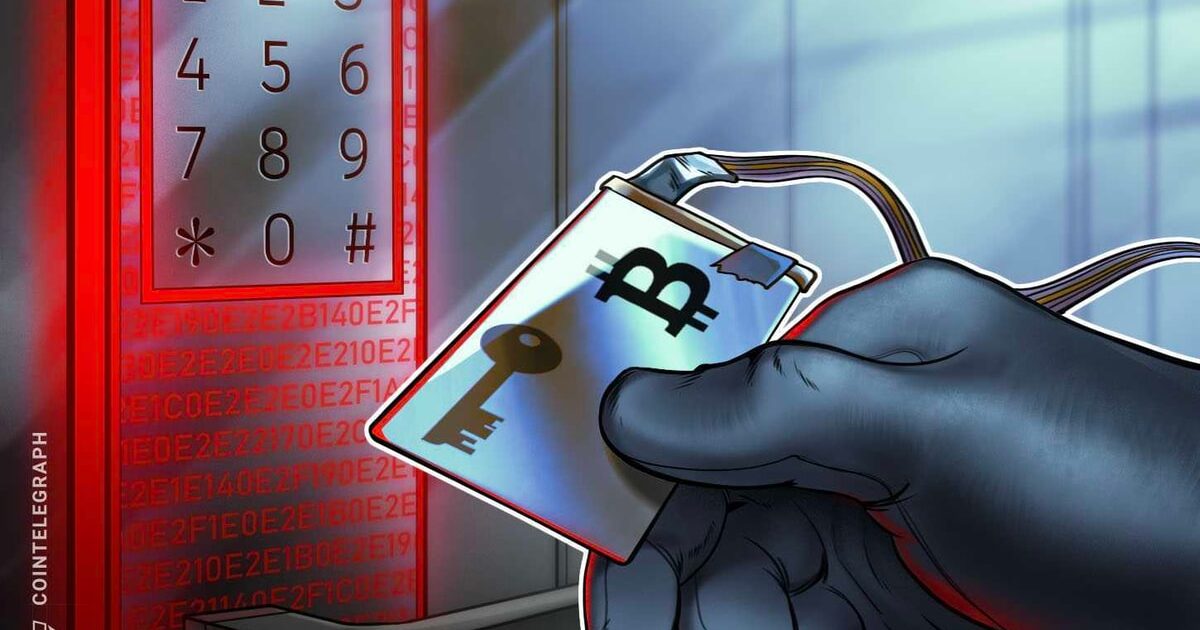Naoris, a cybersecurity firm focused on safeguarding digital assets from quantum computing threats, is offering bounties to anyone who can break the encryption algorithms that secure major blockchain networks.
In an announcement shared with Cryptox on Thursday, Naoris said it has set a bounty of $120,000 — equivalent to approximately one Bitcoin (BTC) — for successfully compromising key cryptographic algorithms used in the crypto industry.
The largest bounty, $50,000, is for anyone who can break secp256k1, the cryptographic standard that underpins Bitcoin, Ethereum and many other protocols. A $30,000 reward is available for breaking Ed25519, which is used by Solana, as well as encrypted messaging services like Signal and WhatsApp.
Naoris is also offering $20,000 for a successful attack on NIST P-256, the elliptic curve used in the Transport Layer Security (TLS) protocol, which secures internet traffic. Another $10,000 is set aside for breaking other elliptic curves, including P-224, P-384 and P-521.
What would happen if cryptography broke?
The bounties are set for breaking elliptic curve parameters, which are values or sets of values that define a specific elliptic curve used in cryptography, thereby determining the security and functionality of the cryptographic system.
Related: Quantum computers could bring lost Bitcoin back to life: Here’s how
The modern world heavily relies on cryptography, and the consequences of its being compromised would be dire and far-reaching.
If secp256k1 were compromised, Bitcoin and multiple other blockchains, the Lightning Network, many Ethereum layer-2 protocols and others would break. Current estimates suggest breaking this algorithm would require around 10 billion trillion years using today’s GPU technology.
A successful attack on Ed25519 would compromise the OpenSSH protocol used for secure server access, disrupt Git version control systems and threaten portions of the DNS security layer.
NIST P-224 is mostly used in legacy systems, such as old smartcards, and is set to be deprecated after 2030 by the US National Institute of Standards and Technology. It is about 30,000 times easier to break than 256-bit curves such as secp256k1.
Related: Bitcoin’s quantum countdown has already begun, Naoris CEO says
The quantum sword of Damocles hangs above Bitcoin’s head
While quantum computers are unlikely to break modern cryptography anytime soon, many experts believe that it is a question of when rather than if. Consequently, despite quantum computers being estimated to need tens of millions of qubits to break those systems, the crypto community has started preparing.
Bitcoin, in particular, is taking its first steps. A new Bitcoin Improvement Proposal (BIP) introduced this month aims to tackle the threat posed by quantum computers by phasing out Bitcoin’s legacy signature schemes.
“A successful quantum attack on Bitcoin would result in significant economic disruption and damage across the entire ecosystem,” the proposal reads. “Beyond its impact on price, the ability of miners to provide network security may be significantly impacted.”
During a mid-April interview with Cryptox, early cypherpunk Adam Back, cited by Satoshi Nakamoto in the Bitcoin white paper, suggested that quantum computing pressure may reveal whether the blockchain’s pseudonymous creator is alive.
He explained that quantum computing could make the Bitcoin held by Satoshi Nakamoto vulnerable to being stolen, forcing him to move it to preserve it.
Researchers are also looking for more blockchain-agnostic solutions. Earlier this week, Sui Research introduced a cryptographic framework that could provide protection against quantum computing threats to multiple blockchains without requiring hard forks, address changes or key updates.
Still, while that particular solution boasts compatibility with all EdDSA-based blockchains, this requirement excludes Bitcoin and Ethereum. Compatible blockchains include Sui, Solana, Near and Cosmos.
Magazine: Bitcoin vs. the quantum computer threat: Timeline and solutions (2025–2035)




